Beginners guide: How to choose LED grow light?
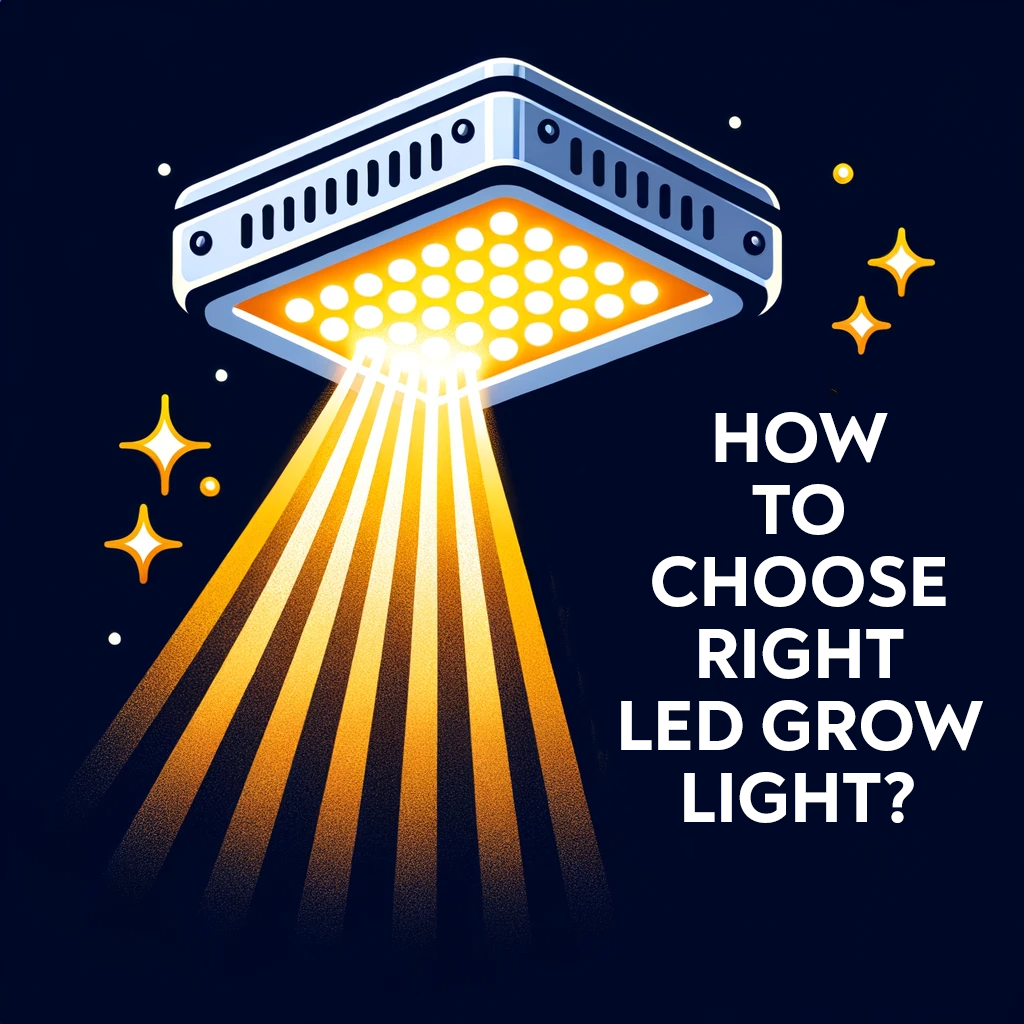
In today's world, LED technology has revolutionized the way we light our homes, offices, and even gardens. For passionate gardeners who want to grow plants indoors, lighting plays a key role in providing optimal conditions for plant growth and flowering. Traditional light sources, such as high-pressure sodium (HPS) lamps and compact fluorescent lamps (CFLs), have been the go-to choice for many growers for years. However, with the advent of LED technology, things have changed. LED lamps offer a number of advantages that can significantly contribute to the success of your indoor grows.
LED grow lighting has not only reduced the energy costs associated with growing plants indoors, but it has also revolutionized the way we can control the light spectrum that our plants receive. Additionally, their long lifespan and low heat emission make them an increasingly attractive option for modern growers.
In this article, we will explore the secrets of LED lighting in plant cultivation, compare it to other types of lighting, and provide practical tips on choosing and using LED lamps. Whether you are an experienced grower or just starting out with indoor gardening, you will find valuable information here that will help you understand how to best use LED lighting in your grows.
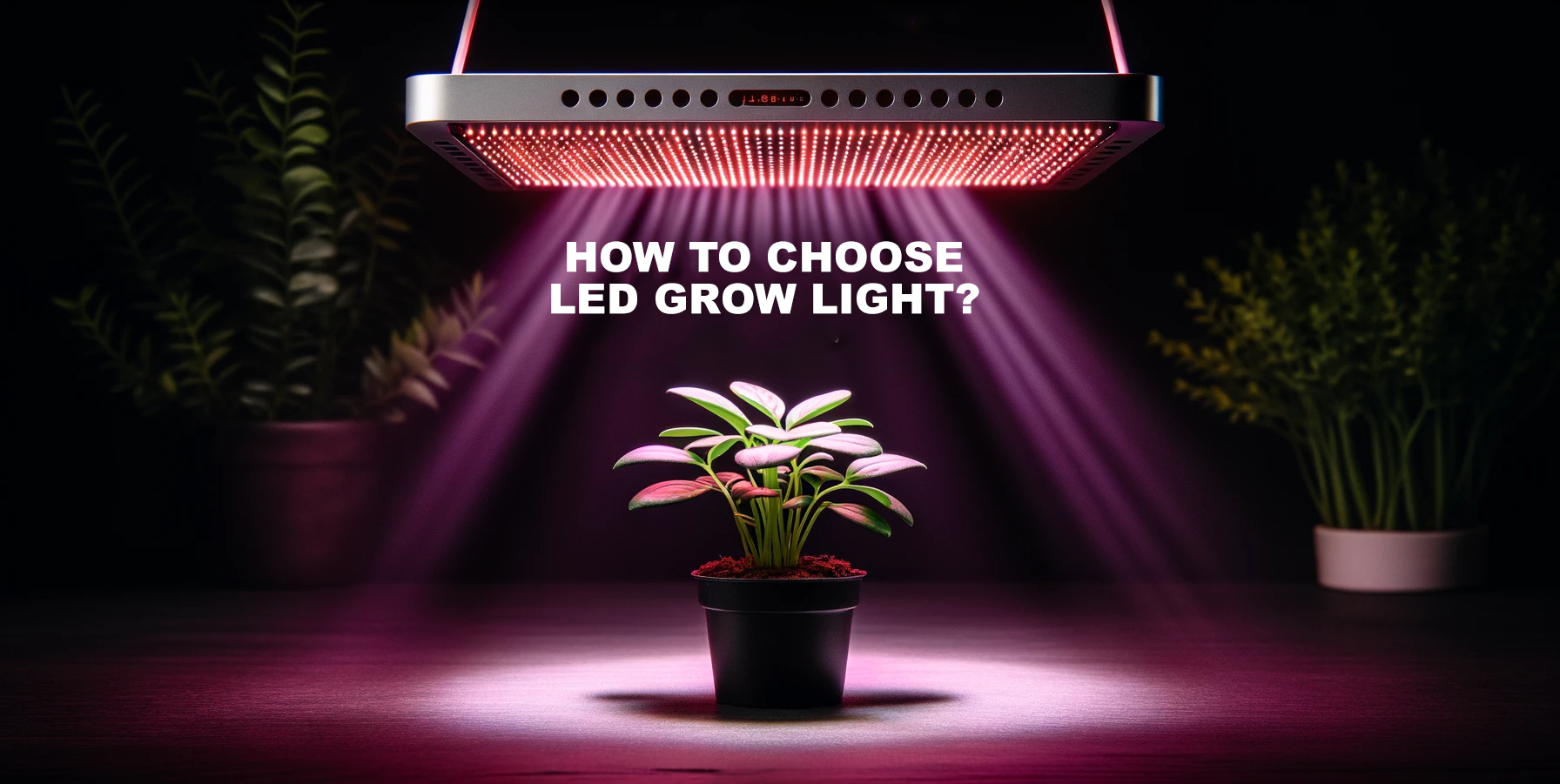
What You need to know about LED grow lights?
Plants need access to light in order to live and grow - this is a fundamental principle that governs the world of plants. Technological development has led to the development of solutions that allow us to illuminate crops using artificial light sources. Over time, these solutions have also progressed and in recent years growers have been able to notice an increasing offer of LED grow lights. Currently, there is a shift from the use of technologically old and less efficient HPS or CFL lamps in favor of LED lighting. Growing competition in the LED lamp market is causing manufacturers to increasingly diversify their offer, constantly improving their products. There are several reasons for this, starting from the greater energy efficiency of LEDs, and ending with their low heat emission. What is worth knowing about lights designed for plants?
Can plants grow under artificial light?
Let's start by clearing up any doubts - yes, plants can grow and flower under artificial light, provided that the light spectrum emitted by artificial light sources is properly matched to their needs. The key element for plant development is photosynthesis, a process that allows plants to convert light into energy. For photosynthesis to occur efficiently, plants need light in specific spectral ranges, primarily in the red and blue light ranges.
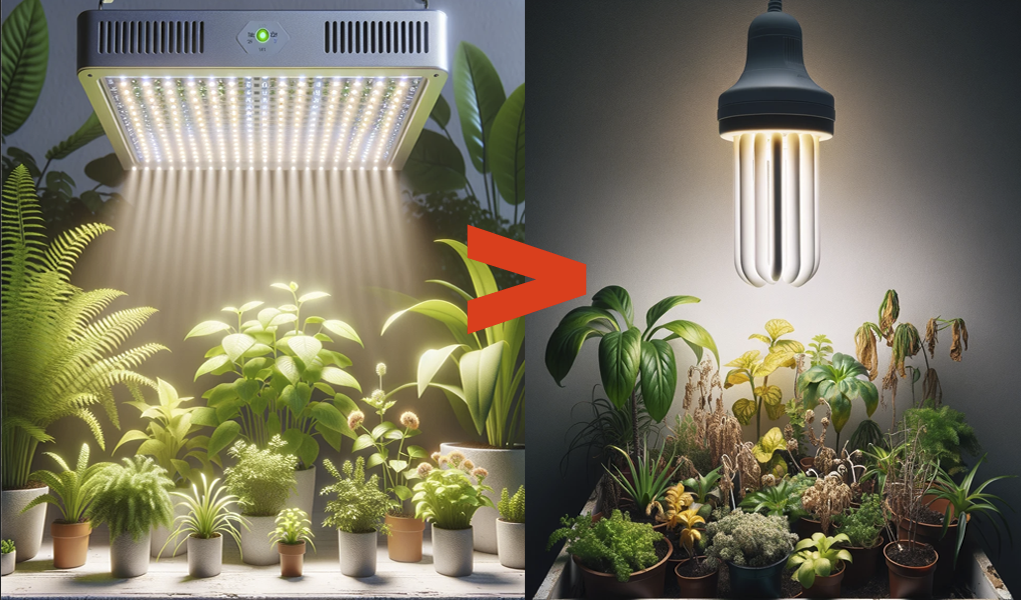
How does LED lighting work?
LED lighting (Light Emitting Diode) is an illumination technology that produces light by the flow of electric current through a semiconductor. When current flows through the diode, electrons in the semiconductor are excited to higher energy states and emit light as they return to the ground state.
LED lamps are known for their high energy efficiency, long lifespan, and ability to emit light in very precise spectral ranges. This makes LED lighting an excellent solution for many applications, including indoor plant cultivation, where the right light spectrum is essential for healthy plant growth and flowering. Additionally, LED lamps emit significantly less heat than traditional light sources, making them a safer and more energy-efficient choice.
Why are LED lights better than traditional light sources like HPS and CFL lights?
- Energy efficiency: LED lights consume significantly less electricity than traditional HPS or CFL lights. This lower energy consumption translates to lower electricity bills and makes LED lights a more economical choice for plant growers.
- Longer lifespan and lower heat emission: LEDs have a longer lifespan, often exceeding 50,000 hours of use, and emit significantly less heat, which minimizes the risk of overheating plants and allows for easier control of conditions in the growing room.
- Precise light spectrum: LED technology enables the emission of light in specific spectral ranges that are essential for healthy plant growth and flowering. Traditional plant lights such as HPS and CFL produce white light first, which is then converted to other colors through filters in the bulb, which gives less precision in the spectrum of light delivered to the plant.
How does the color of light affect plant growth?
Now that we have discussed the topic of the light spectrum, it is also worth knowing what it is and how the colors of light affect plants. Understanding the action of colors is not necessary for choosing an LED lamp, but it can help us make a decision about how the plants are to develop in the future.
Blue light (436-495 nm): Blue light helps plants produce chlorophyll, a pigment essential for growth. It also helps to stimulate germination and root development in young plants and seedlings.
Red light (627-780 nm): Red light is essential for the flowering process of plants. It supports the development of flowers and fruits, and also stimulates photosynthesis, especially in the deeper layers of leaves. Red light is also involved in regulating the ripening period of plants.
Violet and ultraviolet light (100-436 nm): Although violet and ultraviolet light is not as essential as blue and red light, it can help control plant growth, especially in fighting pathogens and pests. Additionally, these lights can affect the taste, color, and smell of the plant and its fruits.
Green light (495-566 nm): Green light is used by plants in small amounts, but it can help penetrate light into the deeper layers of leaves, which is beneficial in denser crops and larger plants. Green light is also useful for viewing plants in indoor growing rooms without disrupting the plant's daily cycle.
Infrared light (780-850 nm): Infrared light can be very helpful during the flowering phase of the plant, and in the case of some plants, it can increase the amount of fruit. It is usually used at the end of the flowering phase.
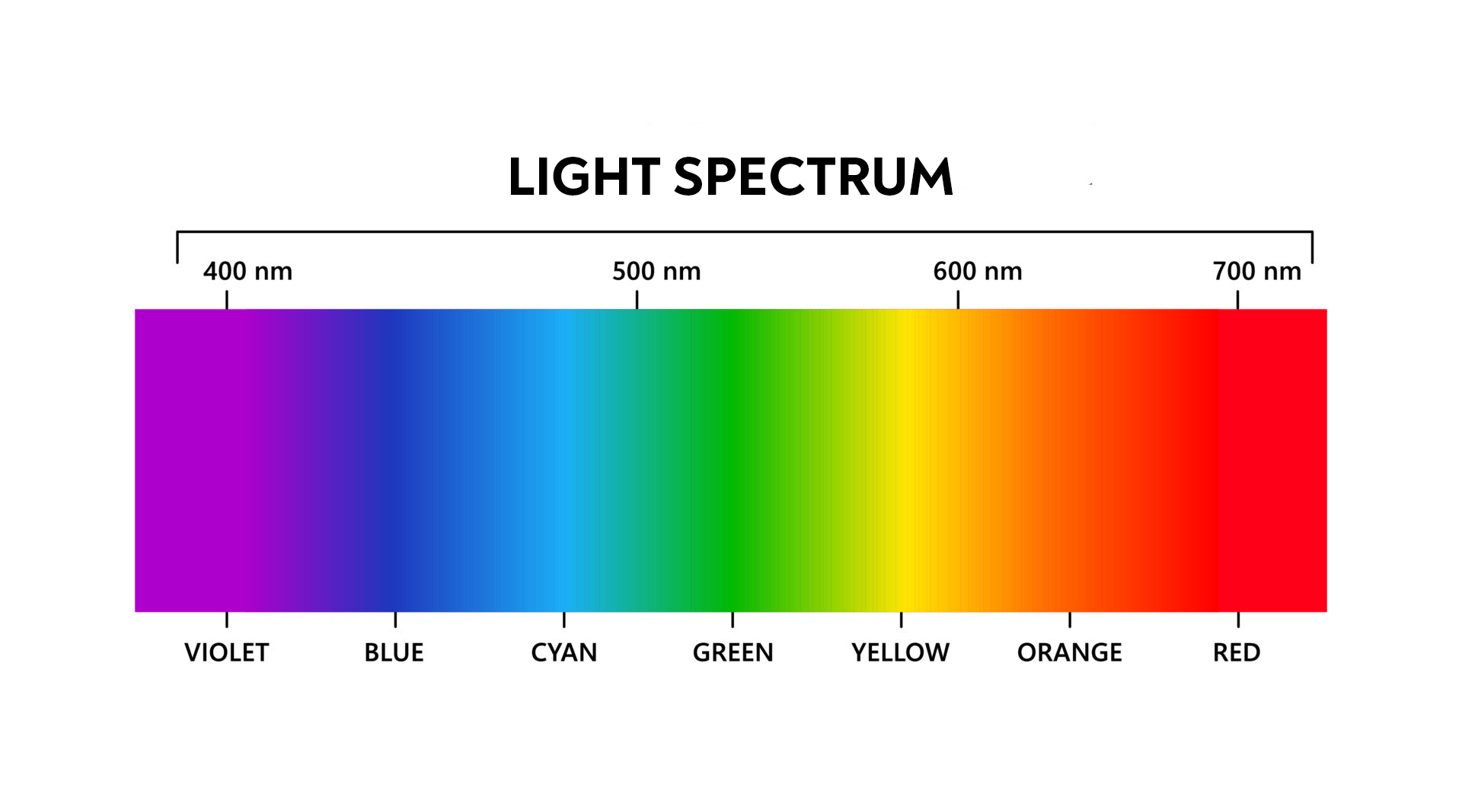
Units of light measurement
Knowing these indicators will be helpful in determining the requirements of the plant we are growing and whether a given lamp meets the requirements of the plant in our growing conditions.
- PAR (Photosynthetic Active Radiation): The PAR indicator determines the amount of light that the plant uses for the photosynthesis process in the range of wavelengths from 400 to 700 nm. It is also known as visible light.
- DLI (Daily Light Integral): The DLI indicator represents the total amount of light reaching the plant within 24 hours. This indicator has a direct impact on the development and quality of the plant.
- PPF (Photosynthetic Photon Flux): The PPF indicator measures the number of photons emitted from a light source per second, informing us about the amount of PAR light emitted by a given light source.
- PPE (Photosynthetic Photon Efficacy): PPE is an important quantitative indicator used to quantify the efficiency of an lighting fixture. In LED lighting for cultivation, PPE is a statistic that determines how much PAR light the cultivation light produces from its input power. The higher this PPE value, the more efficient the cultivation lighting system is in converting electrical energy into PAR photons.
- PPFD (Photosynthetic Photon Flux Density): The PPFD indicator determines the density of the photosynthetic photon flux falling on a unit of area, which is key to understanding how intensively the plant is illuminated.
Thoughtful understanding and monitoring of these indicators can significantly assist growers in optimizing lighting conditions for their plants, leading to healthier plants and higher yields.
DLI - Daily Light Integral
Daily light requirement for the most frequently cultivated plants.
| Plant | DLI Index | Lighting Duration (h/day) |
|---|---|---|
| Basil | 15-20 | 12-14 |
| Bok Choy | 10-12 | 14-18 |
| Broccoli | 15-35 | 12-14 |
| Butter Lettuce | 14-17 | 12-14 |
| Chives | 12-14 | 12-14 |
| Cilantro | 15-20 | 12-14 |
| Cucumber | 20-30 | 12-14 |
| Kale | 14-16 | 14-16 |
| Leafy Vegetables | 12+ | 12-14 |
| Mint | 10-16 | 12-14 |
| Oregano | 15-20 | 12-14 |
| Parsley | 10-16 | 12-14 |
| Spinach | 15-17 | 12-14 |
| Thyme | 10-20 | 12-14 |
| Tomato | 22-30 | 8-12 |
How to choose LED grow light for plants? Beginners guide
When choosing LED lamps for plants, it is worth paying attention to a few factors that will help you find the best solution for your growing needs. Here are a few tips:
Type of plant:
Consider the needs of your plants - identifying the type of plants you plan to grow is key, as different plants have different light requirements. For example, flowering plants need more light than herbs or lettuce. Therefore, before buying, it is worth considering whether the lamp will be used for growing ornamental plants, vegetables, or herbs. Another important thing is the stage in which the plants are - the demand for light also depends on whether we are dealing with a seedling or a flowering plant.
Size of the growing space:
Measure the area where you will grow plants - the size of your growing space will determine how many and how large LED lamps you will need. Determining the number of plants will also be important, as they should be evenly lit, which will also affect the choice of the lamp.
Choosing a LED grow light for plants:
- Power (wattage): The power of a LED lamp is important because it determines how much electricity is consumed. Although power is not a direct indicator of light intensity, higher power can provide more light, but it is also worth looking at other lamp parameters. Knowing the power will also help you understand the energy costs associated with using the lamp. In short, the lamp power (W) is the simplest way to compare different LED lamp models to each other.
- Light spectrum of LED light: Plants grow best at a specific light spectrum. LED lamps offer different light spectra that can be adapted to different plant growth phases - from germination to flowering. When choosing an LED lamp, it is worth paying attention to whether it offers a full spectrum of light or whether the light spectrum can be adjusted according to the needs of the plants. Currently, manufacturers are moving away from producing lamps for specific light spectra in favor of full spectrum (Full Spectrum LED lamps) which makes it easier to choose and increases the versatility of the lamp.
- Manufacturer: Choosing a reputable brand can be beneficial because well-known brands typically offer better quality and reliability, as well as better customer service and warranties. Our recommended manufacturers are Grow The Jungle, Lumatek, Mars Hydro, and Spider Farm. For people looking for LED lighting for plants at home, the best choice will be Verticana - light is less annoying due to the white colour and focusing lenses.
- Additional features: When choosing an LED lamp for plants, it is worth paying attention to additional features that can make growing easier. Power adjustment allows you to adjust the amount of light to the needs of the plants, Bluetooth control allows you to control the lighting using a smartphone, and the options to turn on UV and infrared light can further support plant development and resistance. These additional features can significantly improve the comfort and efficiency of cultivation, while providing plants with optimal conditions for growth and flowering.
Checking the LED grow lamp specifications
The next step after determining what type of LED lamp we are looking for will be to calculate the light demand for our crop. Our Lumen light / PAR calculator | Growbox calculator will be useful for this. Compare the results from the calculator with the specifications of the lamps of the manufacturer we are interested in. It will be good if these results will be slightly higher than the values from the calculator - this will give us the confidence that the chosen lamp will be right for us.
Recommended LED grow lights:
Recommended LED grow lights for small crops:
Recommended LED grow lights for bigger yelds:
How to install LED Grow Lights?
Installing LED grow lights in a grow tent or space is essential for providing plants with the right conditions for growth and flowering. Here are a few tips on how to do it correctly:
- Placement: LED grow lights should be placed centrally above plants to ensure even light distribution. In the case of larger grow spaces, it may be necessary to use multiple lights to provide adequate coverage.
- Height: The distance between the light and the plants is critical. Lights that are too close can cause plant burn, while lights that are too far away may not provide enough light. The typical distance is between 30 and 75 cm, although this can be adjusted depending on the power of the light, the growth stage, and the specific needs of the plants.
- Height adjustment: When choosing a mounting system, it is worth considering options with adjustable height. This will make it easy to adjust the height of the light as the plants grow. However, if the manufacturer does not include adjustable hangings in the set or additional ones are needed, we can easily purchase them separately in our store. We offer a wide selection of models.
- Angle settings: Some LED grow lights have adjustable light emission angles, which allows you to direct the light where it is needed and minimize wasted light. The usual lenses in LED grow lights range from 5 to 45 degrees (narrow lenses) and from 45 to 120 degrees (wide lenses).
- Ventilation and cooling: LED grow lights emit less heat than traditional grow lights, but it is still important to provide adequate ventilation in the grow space to maintain the right temperature.
Proper installation and adjustment of LED grow lights are essential for providing plants with optimal growth conditions which leads to bigger yelds.
Silent LED Grow Lights with Passive Cooling
Smaller LED grow light models do not have any cooling problems due to their size, but when choosing larger LED grow lights, you will often see a ribbed design that eliminates the need for fans. Passive cooling systems use heat sinks or other structural features to dissipate heat outside the lamp, keeping the diode temperature at a safe level. Passive cooling is quiet, which is beneficial in environments where noise is an issue, and it also reduces energy consumption and the risk of failure that can occur in active cooling systems. Additionally, the solid construction of a passive cooling system can increase the lamp's lifespan, which is beneficial for both amateur and professional growers.
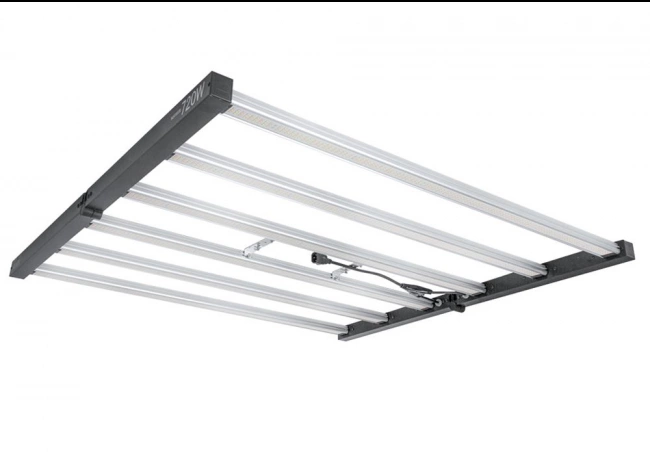
Human-Friendly LED Lighting for Plants
LED grow lights often emit intense colors of light, such as red or blue, which are optimal for photosynthesis, but can be unpleasant or tiring to be around. Additionally, some LED lights may have a low color rendering index (CRI), which makes objects look different than they would in natural light. Some LED lights may also flicker, which can be imperceptible to the human eye, but nonetheless tiring for our vision over a longer period of time.
Fortunately, there are lighting systems designed with the idea of illuminating plants from a distance. An example of such a solution is the VERTICANA lighting system, which offers white light that is more pleasant for people in the room, while still maintaining a spectrum of light that is beneficial for plants, making it an excellent choice for residential and office spaces where we want to illuminate our green wall or vertical garden or single plants.
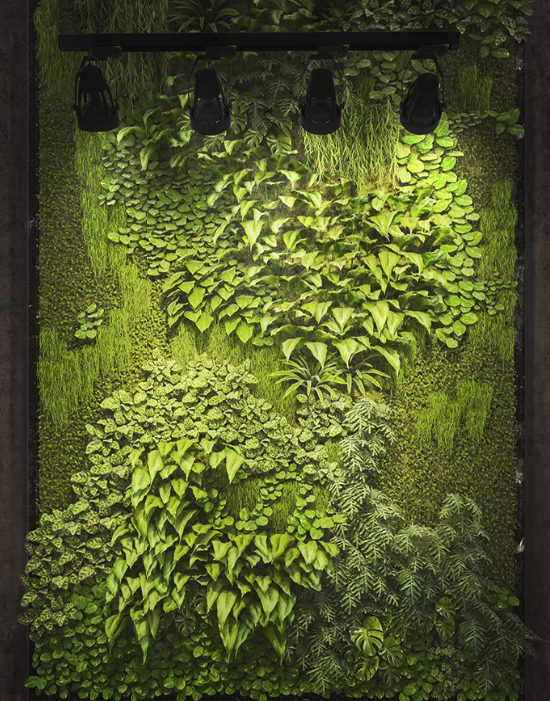
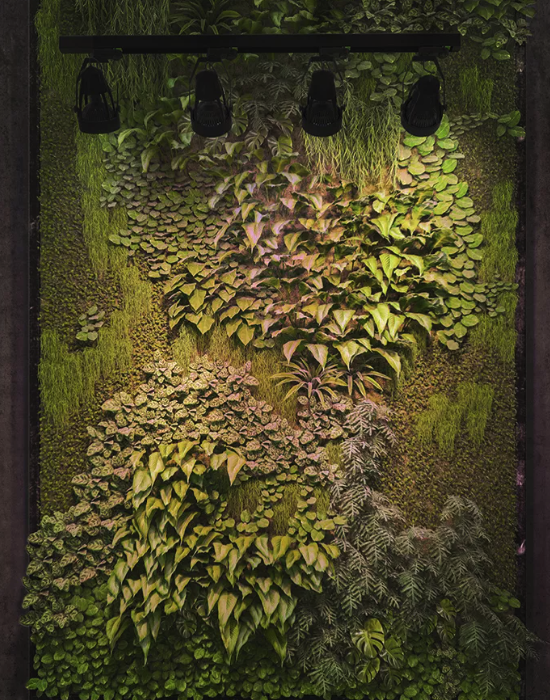
Green wall illuminated by Verticana Green wall illuminated by other light source
LED Lighting for vertical gardens, green walls and indoor plants
The VERTICANA lighting system is designed specifically for indoor plant lighting, vertical gardens, and other indoor plants. Unlike other lamps on the market, VERTICANA enables effective lighting of plants from a long distance. The system can be easily mounted directly to the ceiling using a special track, and individual bulbs can be mounted anywhere in your room. The light used in the VERTICANA system has a high color rendering index compared to competing solutions, providing plants with the most important wavelengths of light necessary for active photosynthesis. This is an ideal solution for indoor plants to supplement the lack of light in autumn and winter.
Here are some of the key benefits of the VERTICANA lighting system:
- Effective LED lighting from a long distance: VERTICANA uses a combination of high-quality LEDs and optics to create a uniform, glare-free light that can reach plants from a distance of up to 5 meters. This makes it a great option for vertical gardens and other large-scale indoor plant installations.
- High color rendering index: The VERTICANA system has a high CRI,, which ensures that objects appear natural under the light. This is important for people who want to enjoy the beauty of their plants without sacrificing the comfort of their space.
- Ideal for indoor plants: The VERTICANA system is designed specifically for indoor plants. It provides the right wavelengths of light for active photosynthesis and make them look like they're in day light.
If you are looking for a high-quality LED lighting system for your indoor plants, the VERTICANA is a great option. It is effective, efficient, and provides the right light for your plants to thrive.
Examples of LED grow light applications
Moving from theory to practice, in this section we will present how LED grow lighting is applied in the real world. We will show how properly mounted LED lights and grow light systems look in different growing environments, such as growboxes or specially adapted rooms.
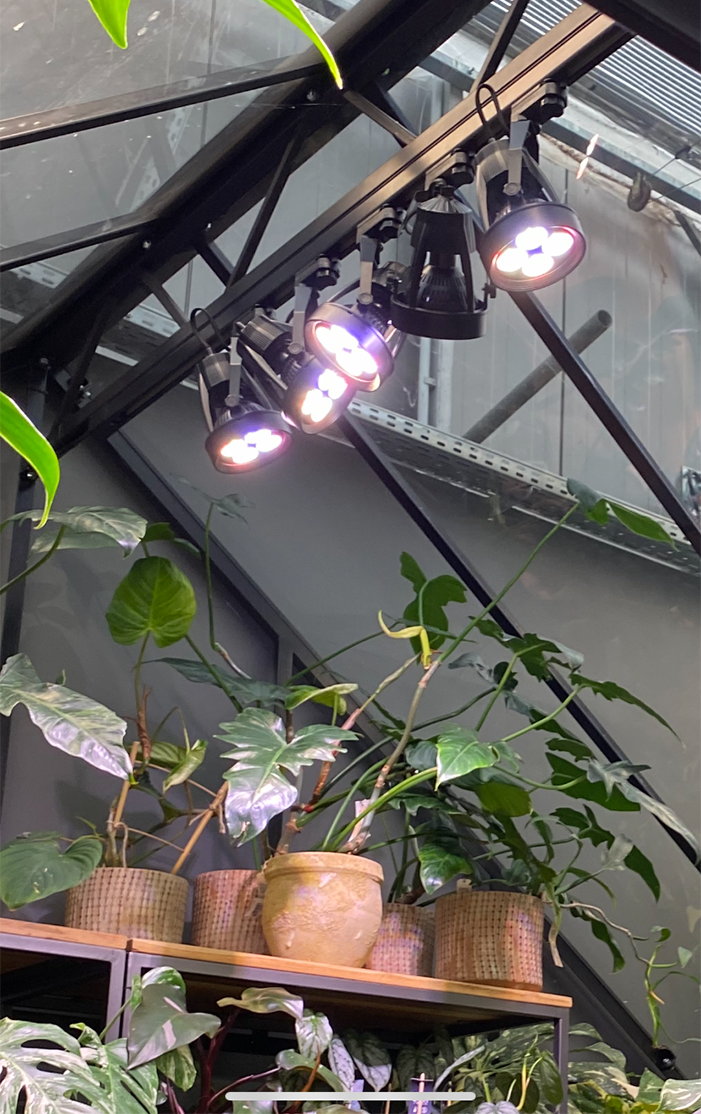
Is LED lightning good for plants?
As you can see in the photo - absolutely. We can see 12 pots of tomatoes in the vegetative phase under a Nemesis 1000W lamp from Grow The Jungle in a grow tent. A well-chosen LED lamp easily provides plants with appropriate light conditions, which promotes their healthy growth and fruiting.
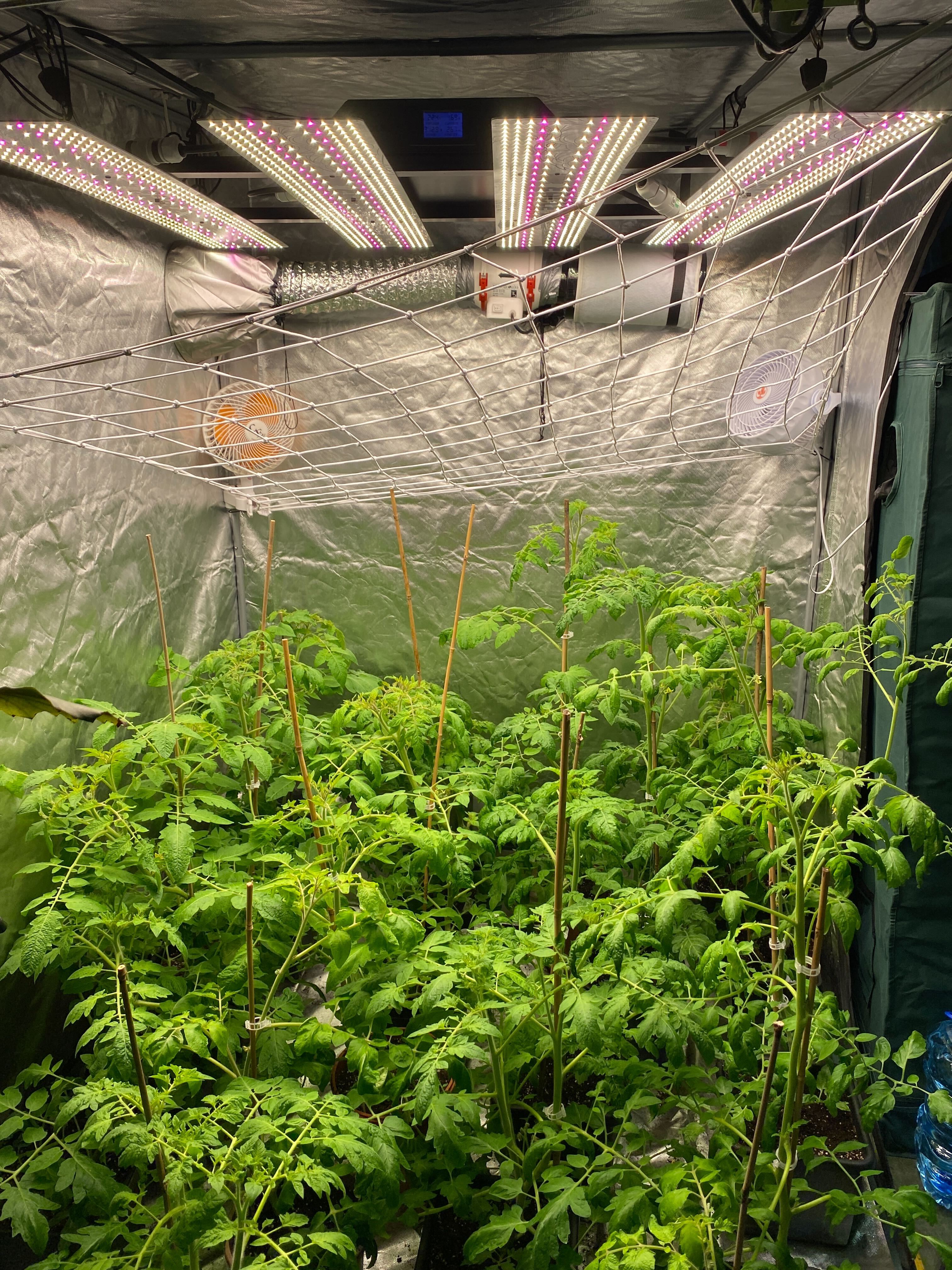
In conclusion, LED lighting is an innovative and energy-efficient solution that perfectly meets the needs of plants in different phases of their growth and development. Thanks to the ability to adjust the light spectrum, low heat emission and long life, LED lamps are an efficient tool to support plant cultivation for both hobbyists and professional growers. However, it is important to understand their specifications in detail and choose a model that best meets the individual needs of our plants, which in turn will contribute to achieving optimal cultivation results.
Best LED Grow Lights for indoor plants
In our article, we have highlighted the key advantages of LED lighting in plant cultivation, as well as discussed things to consider when choosing an LED lamp, and provided practical tips on its installation and use. By presenting real-world applications of LED lighting in plant cultivation, we have illustrated how modern technologies can support gardening enthusiasts at every stage of cultivation. Check our store range of LED lamps and ask for advice of our experts to find the optimal solution for your plants.





